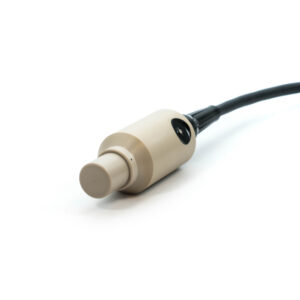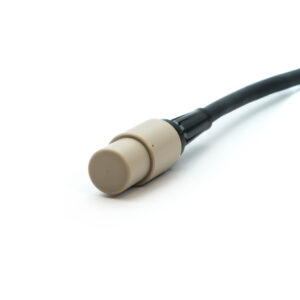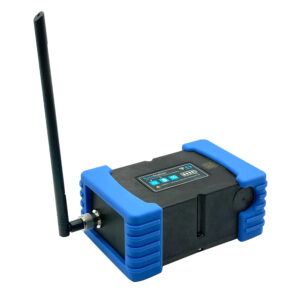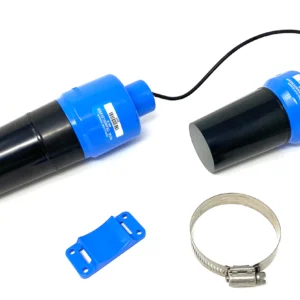This system is designed and priced for use by people who need to know generally where their ROV is located or want to hold a position in the face of currents or tether pull.
A baseline system consists of an electronics stack and a sensor head containing piezoelectric elements and an inertial measurement unit (IMU). An upgraded IMU version of the head is also available, which has similar positioning performance but reduced calibration requirements.
The electronics can be packaged in the user’s existing or new enclosure, or an optional Cerulean DVL enclosure can be used.
An optional GPS sensor is available, which can be used to easily initialize an ROV’s position with respect to the standard latitude-longitude world coordinate system. If the optional GPS is not used, the user can provide initialization coordinates from their own GPS or other reference, or simply use the DVL’s dead reckoning outputs relative to an arbitrary coordinate system.
Specifications
|
Maximum Depth Rating, Sensor Head |
300m |
|
Volume, Sensor Head |
100 ml |
|
Mass, Sensor Head |
130 gm |
|
Volume, Optional Enclosure |
430 ml |
|
Mass, Electronics Stack |
115 gm |
|
Mass, Optional Enclosure with Electronics Stack |
665m |
|
Maximum Operating Height (Altitude)* |
40m |
|
Minimum Operating Height |
30 cm |
|
Maximum Operating Speed |
8 knots |
|
Dead Reckoning Circular Error Probable (CEP)
(CEP = median expected error)
|
5% of distance traveled |
|
Angular Operating Envelope, Degrees off vertical |
0 to 20° |
|
Ping Frequency |
675 kHz |
|
Ping Repetion Rate |
5 – 20 Hz |
|
V-in Power Min and Max |
12V to 28V DC |
|
V-in Power Average
(power averaged over 1 second)
|
12V to 24V DC, 8 watts average |
|
V-in Current, Peak
(largest current spike during operation irrespective of voltage)
|
1.2 Amperes |
|
Serial Comms Voltage Levels |
3.3V TTL or 5V TTL, auto sense |
|
Serial Parameters, Default |
115200,8,N,1 |
|
Ethernet Support |
10/100 Mbps |
*Achieved maximum height is dependent on several variables, including tilt of the sensor head, flatness of the bottom, hardness of the bottom, vegetation cover on the bottom, and salinity. On a hard-bottom body of water such as Lake Superior, we regularly achieve 40+ meters. On a muck-bottom lake such as Lake Minnetonka, we sometimes struggle to get 20 meters. Hard-packed sand bottoms tend to be somewhere in between those extremes.
DVL-75 Options






Reviews
There are no reviews yet.